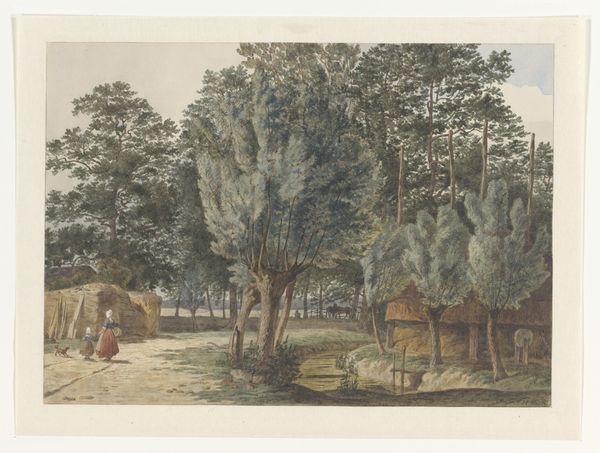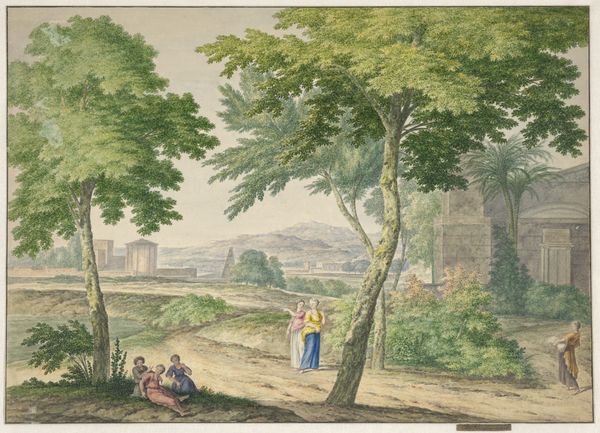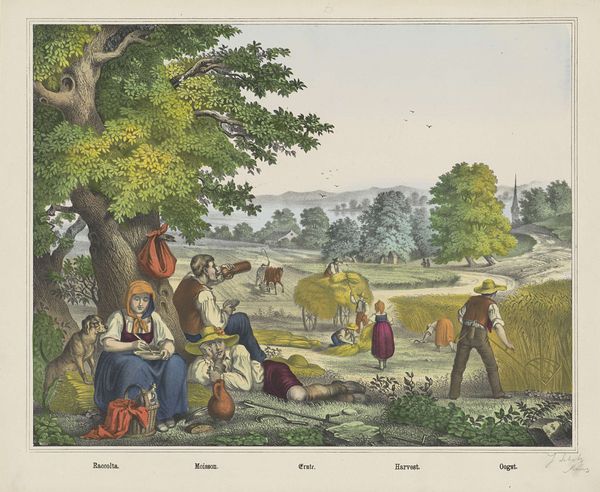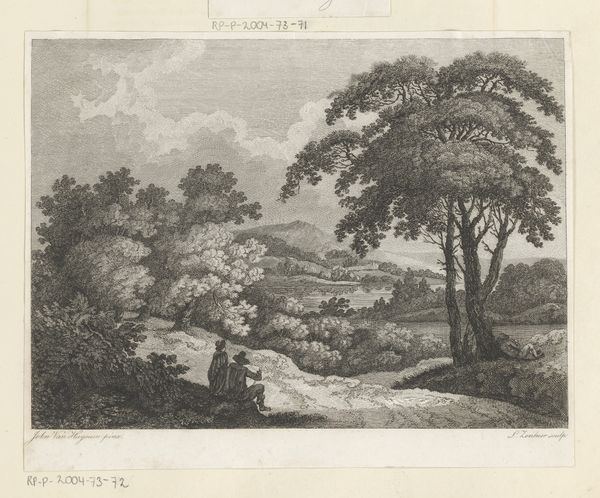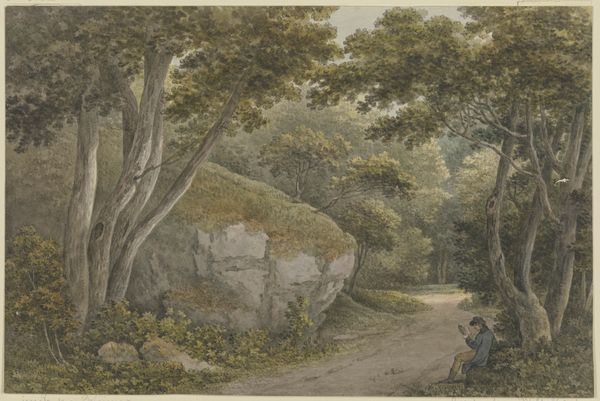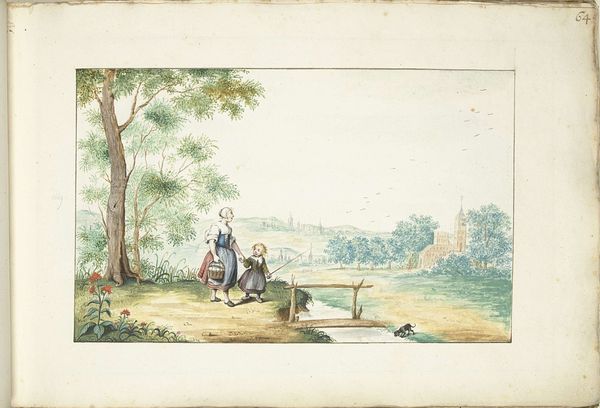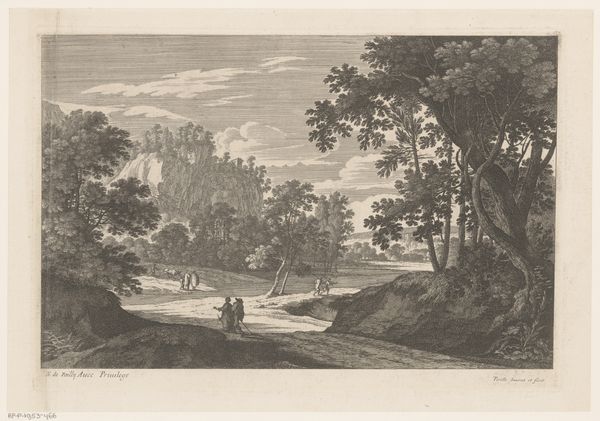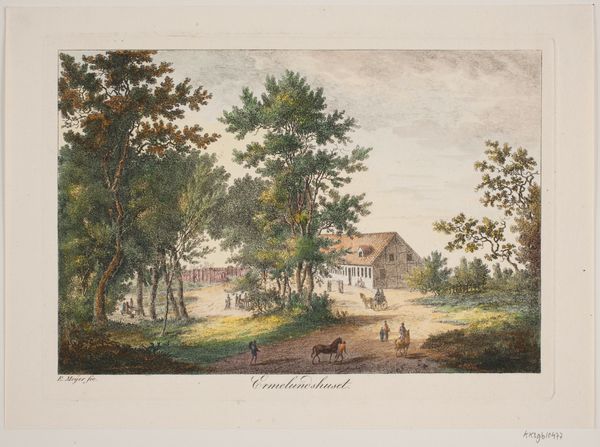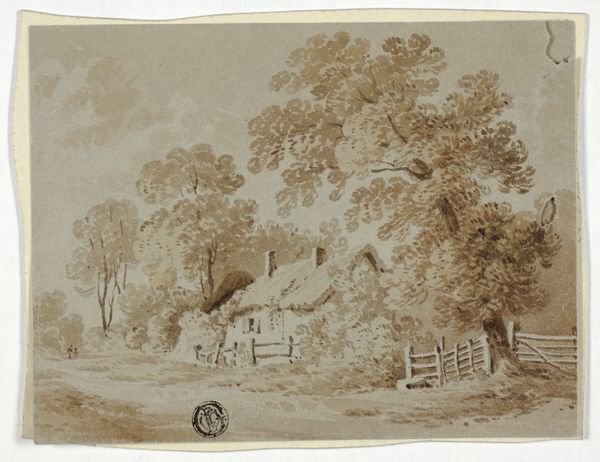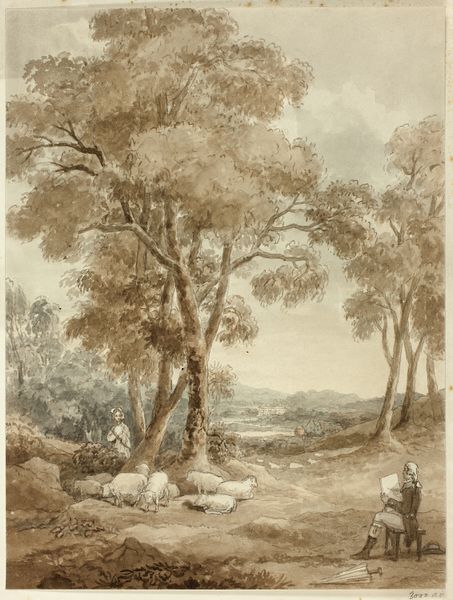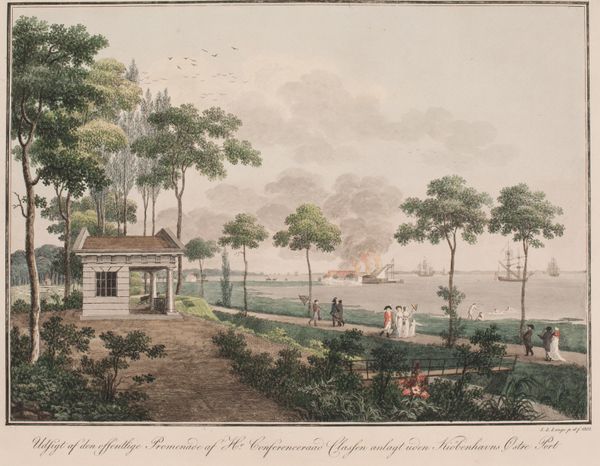
Dimensions: 261 × 375 mm (image); 303 × 406 mm (sheet)
Copyright: Public Domain
Curator: This is "Summer Morning," a color lithograph created in 1862 by Frances Flora Bond Palmer, though she often signed her work as F. F. Palmer. Editor: It feels incredibly serene. There’s almost a staged quality to the light and figures; they appear more picturesque than realistically captured. Curator: You’ve picked up on its romantic leanings. It's pastoral, idealized. Palmer, who worked for Currier & Ives, frequently depicted scenes of American life, often promoting an idealized vision of progress and settlement. Her work helped shape how Americans envisioned their country. Editor: Yes, I notice that even the figures – mostly women and children – seem placed to emphasize certain aspects of domesticity and virtue. They’re positioned at the edge of the road overlooking, and separated from, the promise of land and labor that unfolds in the distance. How were images like this received at the time? Curator: Prints like this were hugely popular. They democratized art. For families unable to afford original paintings, prints offered a window into a perceived better life, or a scene they aspired to. It's worth noting the social undercurrents too; this was during the Civil War, and such idyllic scenes provided escapism from the turmoil of the period. Editor: Did Palmer's gender influence how she depicted these scenes? Are there nuances we might miss by not considering a female perspective? Curator: Absolutely. While perpetuating certain ideals, Palmer's perspective likely offered a different lens on domesticity and the relationship between women, children, and the landscape compared to her male counterparts. These genre scenes become incredibly insightful historical documents if interrogated for details of labor, family, and social structure. The print illustrates not just the surface beauty but hints at the social narratives defining women’s place in that period. Editor: This exploration adds depth and a critical perspective on both the artwork itself, as well as our understanding of societal influences through popular art. Curator: I agree. Reflecting on Palmer’s landscape provides vital insight into how Americans perceived themselves, the stories they wanted to believe, and, crucially, the underlying dynamics of gender, class, and conflict shaping their lives during this pivotal historical juncture.
Comments
No comments
Be the first to comment and join the conversation on the ultimate creative platform.

